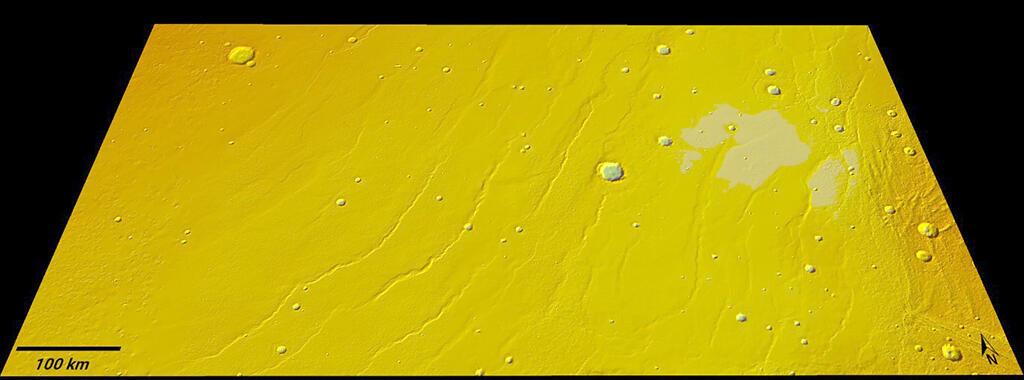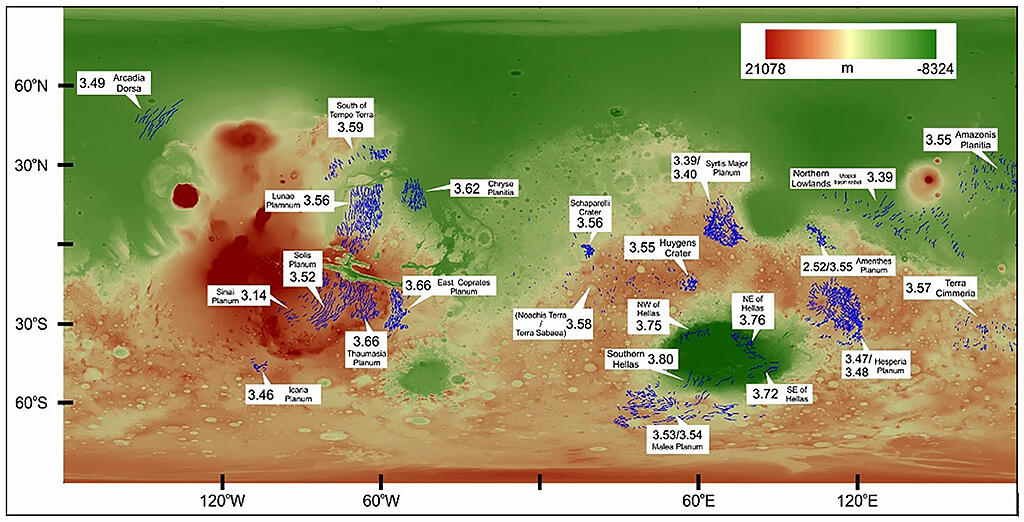The research group comprising Trishit Ruj, a Postdoctoral Fellow at the Japan Aerospace Exploration Agency, and Kenji Kawai, an Associate Professor at the Graduate School of Science, the University of Tokyo, used a state-of-the-art age determination technique called Buffered Crater Counting (BCC) to estimate the age of wrinkle-ridges, a wrinkle-like geological structure found on the surface of Mars. Until now, attempts have been made to explain the thermal evolution of Mars based on the geological evidence left on its surface. However, owing to the limitations in the methods and data used, only the thermal evolution in biased geological regions and ages is possible and has been understood. To clarify this issue, the research group focused on the topography called wrinkle ridges, which can be found globally on Mars.
Wrinkle ridges are believed to have been formed by contractions and strains that occur in the crust after volcanic activity stops. They are considered a clue to understanding when volcanic activity on Mars ceased, providing a clue as to when the planet's interior cooled. Global analyses of high-resolution images captured by spacecraft in recent years show that wrinkled ridges on Mars, based on crater chronology on Mars were mostly formed between 2.5 and 3.8 billion years ago. They were most concentrated in the period between 3.55 and 3.59 billion years ago. Considering the age of activity of the surrounding volcanoes, this result suggests that internal cooling in Mars progressed about 3.7 billion years ago and large-scale volcanic activity ceased. It is expected that the present study will advance research on the thermal evolution inside Mars and improve our understanding of when and how Mars evolved differently from Earth.

Credit: The University of Tokyo

Credit: The University of Tokyo
According to Associate Professor Kawai, "3.7 billion years ago, in addition to high volcanic activity Mars had other geological motions. Clarification of the thermal history of Mars, which is relatively close in size and orbital elements to the Earth, provides important insights in understanding the thermal evolution of Earth."
■ Buffered Crater Counting (BCC), An age estimation method developed from crater chronology. It is possible to determine the formation age of linear and curved topography, which is difficult with conventional crater chronology.
■ Wrinkle ridges are wrinkle-shaped linear structures found on the Moon and Mars. These structures are believed to have formed from erupted lava during volcanic activity.
This article has been translated by JST with permission from The Science News Ltd.(https://sci-news.co.jp/). Unauthorized reproduction of the article and photographs is prohibited.




